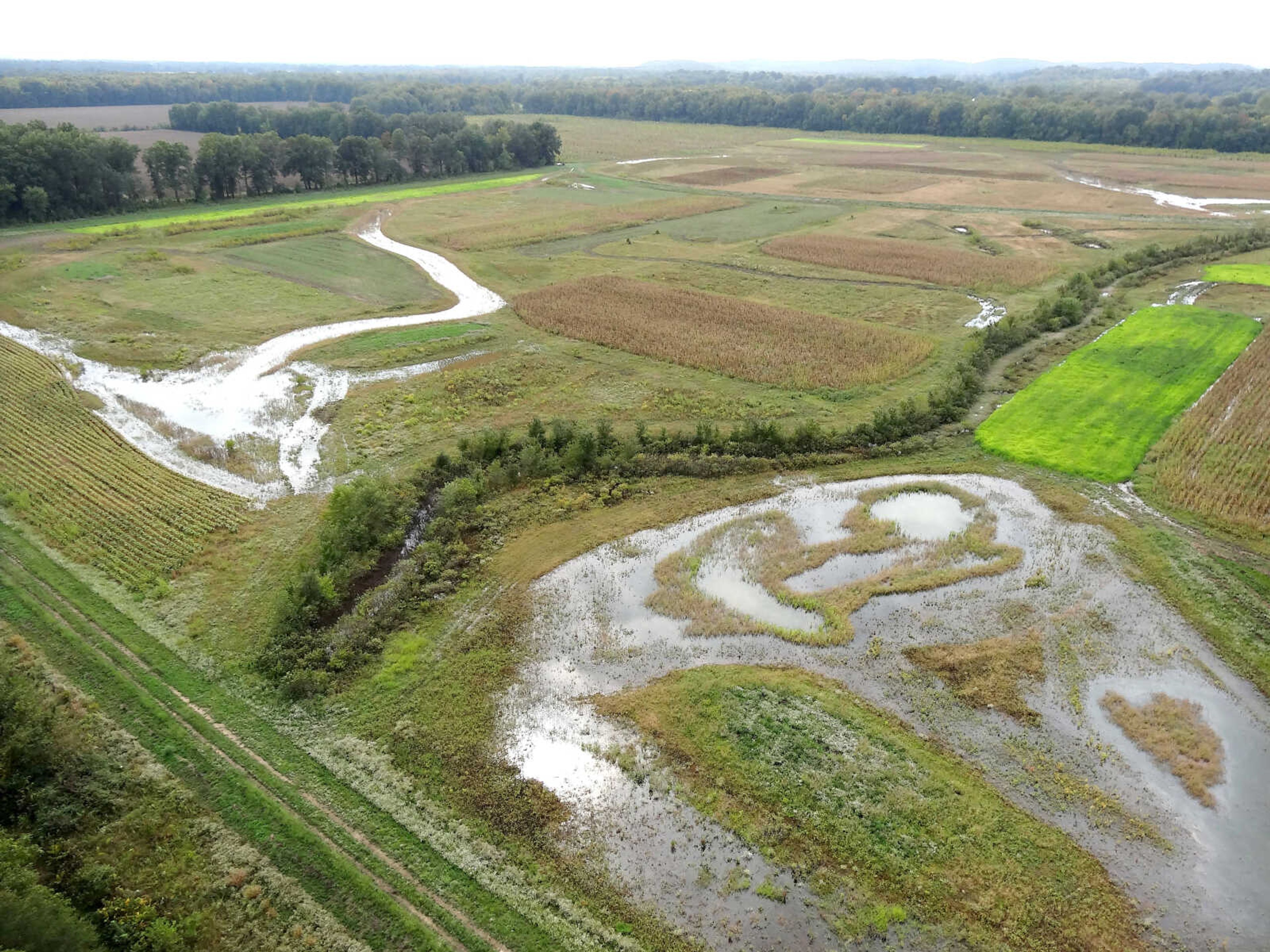Easement programs can help conservationists and landowners
Landowners wanting to permanently protect the wildlife and landscape features of their property can sell or donate conservation easements through a number of local and federal organizations. Brad Pobst is the private land conservationist with the Missouri Natural Resources Conservation Service Cape Girardeau County Field Office in Jackson. ...
Landowners wanting to permanently protect the wildlife and landscape features of their property can sell or donate conservation easements through a number of local and federal organizations.
Brad Pobst is the private land conservationist with the Missouri Natural Resources Conservation Service Cape Girardeau County Field Office in Jackson. He said conservation easements help maintain healthy forests, preserve and improve wildlife habitat and migration corridors, care for water quality, protect scenic vistas and "ensure that lands are managed so that they are always available for sustainable agriculture and forestry."
There are many different types of easements available, including the Missouri NRCS Emergency Watershed Protection Program, Farm and Ranch Lands Protection Program, Grasslands Reserve Program and Wetlands Reserve Program. Efforts are often collaborations between governmental agencies, such as U.S. Fish and Wildlife Service and the U. S. Department of Agriculture, and private organizations, such as the Ozark Regional Land Trust, Nature Conservancy, American Land Conservancy and Missouri Conservation Heritage Foundation, Pobst said.
Besides preserving natural habitats and protecting against future development, easements can be a financial boon. The Wetlands Reserve Program pays from about $1,000 to $3,000 per acre and others pay a fee equal to the land's current value, said Pobst.
Wetlands programs are of interest to farmers in Southeast Missouri who can't put in a crop on a regular basis, due to their land being submerged for part of the year.
"Some years you can get a crop in and some years you can't," Pobst said.
In 2010, $4.5 million was allocated through federal programs to Bootheel farmers, who agreed to keep about 90,000 acres as wetlands though February of every year to provide habitat for migratory birds.
Conservation easements can reduce the land's resale value, Pobst said. But, he added, in his experience, values have stayed the same or sometimes have increased.
There also can be tax advantages, especially if the easement is donated. Estate taxes are significantly lower on some easement lands, "sometimes making the difference between heirs holding onto the family land or selling it to pay inheritance taxes," according to the Fish and Wildlife Service website.
Easement agreements become a part of the deed, which is retained by the landowner, and stipulate how the land is to be used in perpetuity. They may include maintenance requirements or other guidelines specific to the landowner. For example, the Bootheel farmers' easements made allowances for spring planting.
Opponents say the programs are vulnerable to tax abuse and allow the government to easily obtain land. National Center for Public Policy Research analyst Dana Joel Gattuso said in a 2008 report that environmental groups and federal agencies can benefit from easements, but government agencies "can obtain the private property via methods shielded from public scrutiny."
Pobst said he has been involved in eight local conservation easements through the Stream Stewardship Trust Fund, administered through the Missouri Conservation Heritage Foundation to restore eroding stream banks and protect high-quality streams.?
The easements "can provide excellent hunting and fishing opportunities" and contribute to the public good by "preserving the conservation values for future generations," Pobst said.
Almost 20 million acres in the U.S. are under easement, according to the National Conservation Easement Database. Of the roughly 100,000 easements agreements nationwide, there are about 1,500 in Missouri.
For more information, contact the Cape Girardeau County NRCS Field Office at 243-1467 or visit www.nrcs.usda.gov.
Did you know...
There are almost 20 million acres under easement programs in the United States.
The National Resources Conservation Services offers easement programs to landowners who want to maintain or enhance their land in a way beneficial to agriculture and/or the environment. All NRCS easement programs are voluntary.
According to Monica Siler, TITLE, the Wetlands Reserve Program and Grasslands Reserve Program are popular in Southeast Missouri:
__The Wetlands Reserve Program (WRP):__ Helps landowners restore wetlands on agricultural and non-agricultural lands. Restored wetlands provide wildlife habitat for migratory birds, threatened and endangered species and other wetland wildlife. To date, 1,020 easements have been funded statewide encompassing 143,477 acres. NRCS enrolled 52 tracts covering 5,259 acres valued at $11.4 million during fiscal year 2012. Wetlands were restored on more than 8,530 acres.
__Grassland Reserve Program (GRP):__ Offers landowners an opportunity to protect grassland and pastureland rather than converting it to cropland or other uses. In fiscal year 2012, $650,000 in financial assistance was provided to Missouri landowners to enroll two permanent easements covering 340 acres and three rental contracts covering 270 acres. To date, 33 easements have been funded statewide encompassing 3,743 acres.
Connect with the Southeast Missourian Newsroom:
For corrections to this story or other insights for the editor, click here. To submit a letter to the editor, click here. To learn about the Southeast Missourian’s AI Policy, click here.











